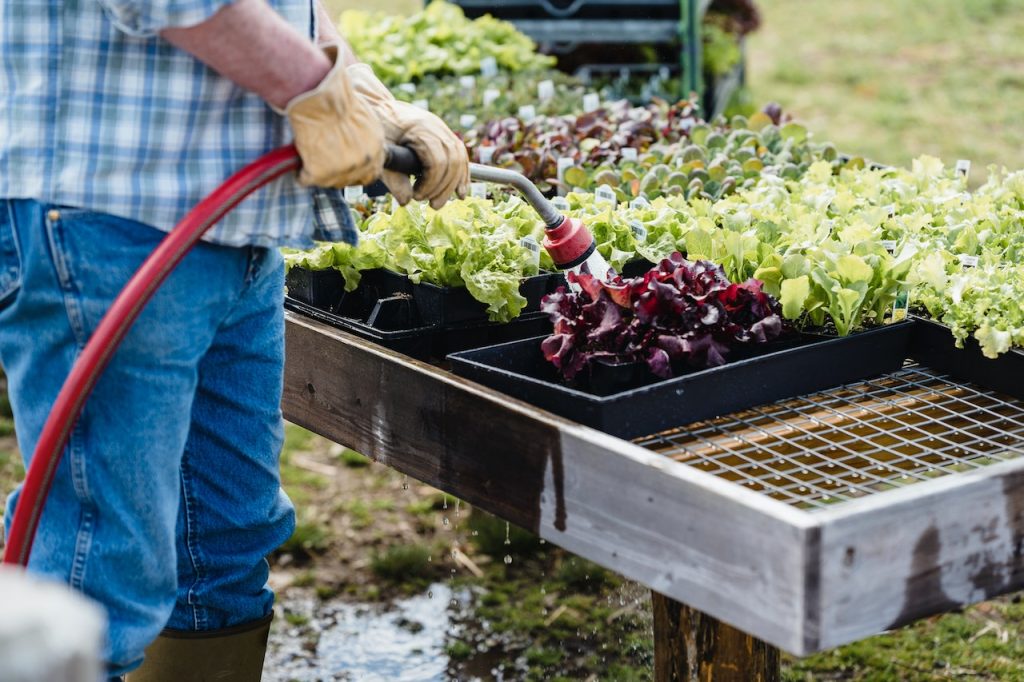Since we are now finally into the fall season, the weather has finally started to cool down. But it also means that we’ve started to notice less fresh produce at our local farmer’s markets. Since we have been actively working on creating our own garden this year, this next season will be a new challenge. Our hope is that we can make the most of a winter garden by starting it now. And in turn save us some money on food and help us eat healthier throughout the cold season.
PREPARing for a winter garden now
When preparing for a winter garden, the first thing to determine is which hardiness zone you live in. This is important because each zone has different first frost dates. All crops are organized by first frost dates, so this is important to know ahead of time.
Since each crop needs a certain amount of light, water and growing time to reach maturity, you want the crops to reach maturity before your first frost hits.
Once you have your approximate first frost date, then you should determine where you want to plant your winter crops.
Each crop will have slightly different requirements for the following:
- Sunlight
- Water
- Spacing
- Soil pH
- Nitrogen content
- Phosphorus content
- Potassium content
Your soil will have varying degrees of vitamins, minerals and nutrients so it might be very beneficial to have it soil tested. You can send your soil off to be tested for free (I’ve done this many times before). Or you can purchase a soil testing kit to use at home instead, if that is your preference.
Since I live in North Carolina, we can send our soil off to the Department of Agriculture for a very in depth soil test. The results of these tests tend to be a lot more in depth than the in home tests, which I happen to be a big fan of. However, it does definitely take much longer to get the results back than a home test would. So this will depend upon how accurate you want to be with your garden, as well as if you’re looking at different areas around your yard to plant.
WINTER CROPS TO PLANT
Once you have determined what your soil makeup is and how much sunlight you get, choosing the crops is the next step. Obviously, don’t choose crops for your winter garden that aren’t things you would regularly eat. Unless you want to branch out and try new things (which is what we love to do!). I would suggest including crops that might be used more for seasoning and flavor enriching also, as these “spices” can certainly kill your grocery budget if you’re not careful..
After making your list of the the more common crops you like, then add in the garden potentials that you may eat more of if you had it available. Once you have your list of potential crop candidates, the next step is to narrow them down by how long they take to reach maturity.
Most seeds will tell you how long they take, on average, to reach maturity. So you want to make sure you plant the crops that take the longest to mature first.
6 – 8 WEEKS TO MATURITY
This is the time frame you should be looking for during this time of the year in order to reap the most benefits from your winter garden.
Some of the most common winter crops in this maturity window are:
- Basil
- Bush Beans
- Collard Greens
- Kale
- Kohlrabi
- Leaf Lettuce
- Mustard Greens
- Radishes
- Spinach
- Swiss Chard
- Turnips
WINTER Garden SUMMARY
Overall, even though we are starting to see less and less fresh produce at this time of year, there are still some things we can plant. Proper planning is the best way to start any new project, and a successful winter garden is no different.
It’s helpful to determine your hardiness zone first and then get your soil tested. After that, start narrowing down the list of winter crops that you’d like to grow and where they might grow best in your yard. Once you’ve chosen your crops, make sure you have enough time for them to reach maturity prior to the first frost in your area. After that, it’s time to enjoy the fruits of your labor and hopefully save yourself some green this winter also!
Have you begun planting your winter garden yet? If so, which ones have you planted and when?








